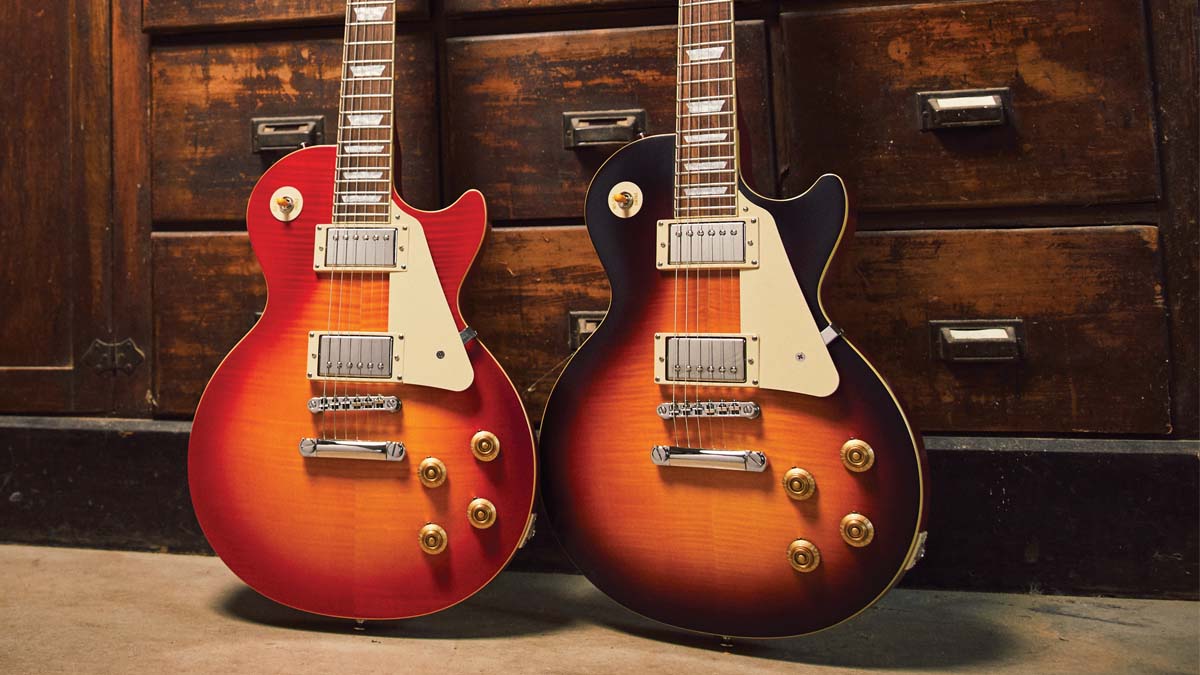GuitarPlayer Verdict
An impressive collaborative effort that delivers a tasty dose of vintage-inspired looks, feel, and tone at a very accessible price.
Pros
- +
On the money in terms of look and feel.
- +
Quality components.
- +
It sounds like a Les Paul.
- +
Good value.
Cons
- -
Fret ends could use a bit of dressing to reduce sharpness.
You can trust Guitar Player.
The relationship between two of our most storied American guitar makers goes back to 1957, when Gibson purchased the New York–based Epiphone company and applied the brand name to new guitars built alongside its own in the Kalamazoo factory.
Come 1970, Epiphone was shifted into more of a downmarket option, with production moved overseas and prices aimed at entry-level players. The new Epiphone Limited Edition 1959 Les Paul Standard, however, represents a return home of sorts.
Although manufactured in China, it’s the first Epiphone guitar made in collaboration with the Gibson Custom Shop in Nashville, and as a result, it displays a wealth of enticing vintage-inspired details for a Les Paul, with a price tag well under $1,000.
“Our relationship with Gibson Custom Shop has always been great,” Epiphone product manager Aljon Go says. “In this new era for Epiphone and Gibson, our product-development team’s synergy takes full advantage of everyone’s combined experience, contributing to the success of all of our brands.
"For this ‘Inspired by Gibson Custom’ guitar specifically, we wanted to bring that authenticity and quality that people associate with our Custom Shop, but make it accessible with this ‘Vintage for All’ mentality.”
While we have to expect that some corners were cut to boil a $5,000 Gibson Custom Shop Les Paul down to a sub-$1k price tag, Mat Koehler, head of product development at Gibson Brands, insists, “There is no quality gap, just a detail gap, in my opinion. “And therein is the main benefit of the Custom Shop team oversight.
- Our pick of the best Epiphone Les Pauls available today
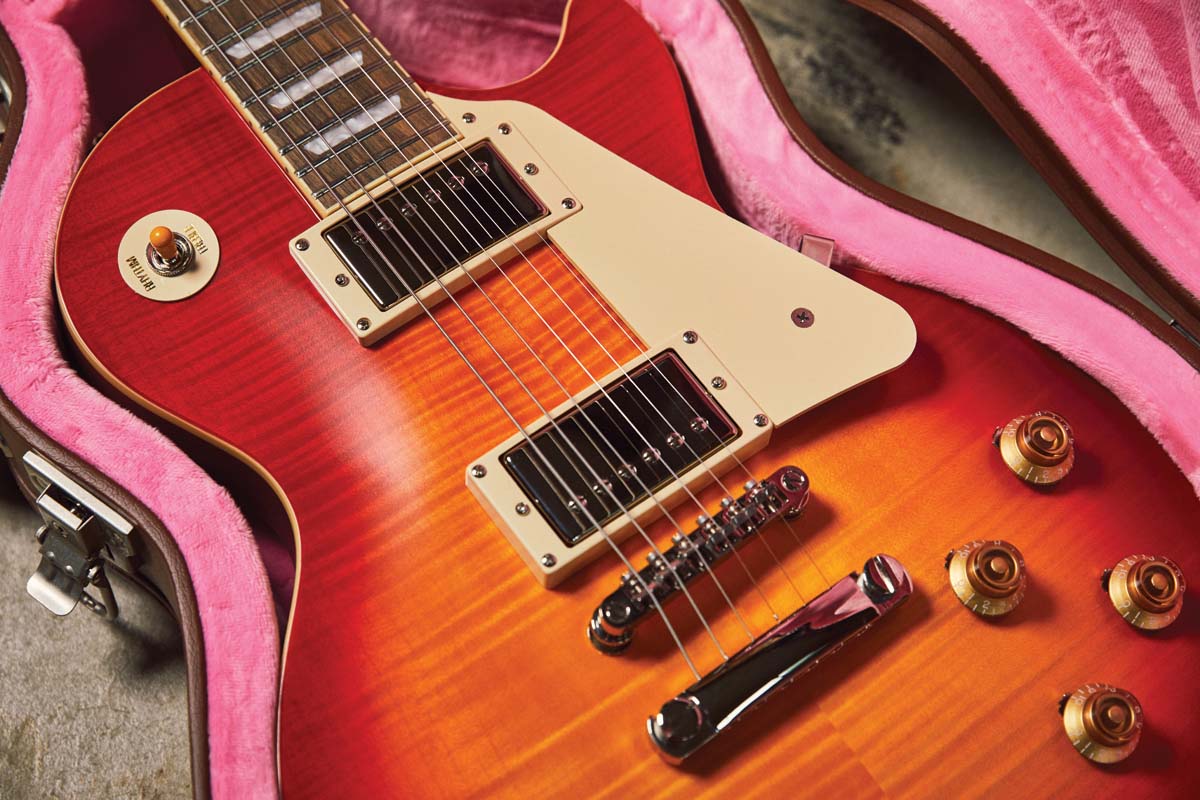
"For decades, the Gibson Custom Shop has been pushing the limits of historical accuracy to 1959 in both construction and the minute aesthetic details. So this is really a chance to apply as many of those meaningful ‘geek specs’ as possible to the Epiphone platform, from the long neck tenons to the vintage-style wiring harnesses to the unbeveled pickguards.”
Other noteworthy specs include a AAA maple top, full-weight mahogany back, genuine Switchcraft toggle and jack, CTS 500k potentiometers, Mallory tone caps, Gibson Burstbucker 2 and 3 humbuckers, tall pickup rings, 1950s-style wiring, a rubbed VOS-style finish, custom switch-plate medallion, and a historic-style brown case with pink lining.
The hand-rolled fingerboard edges that enhance the rounded ’59 neck profile are worth a mention, and to my mind – or left hand, at least – certainly take the playing-feel factor upmarket on this guitar.
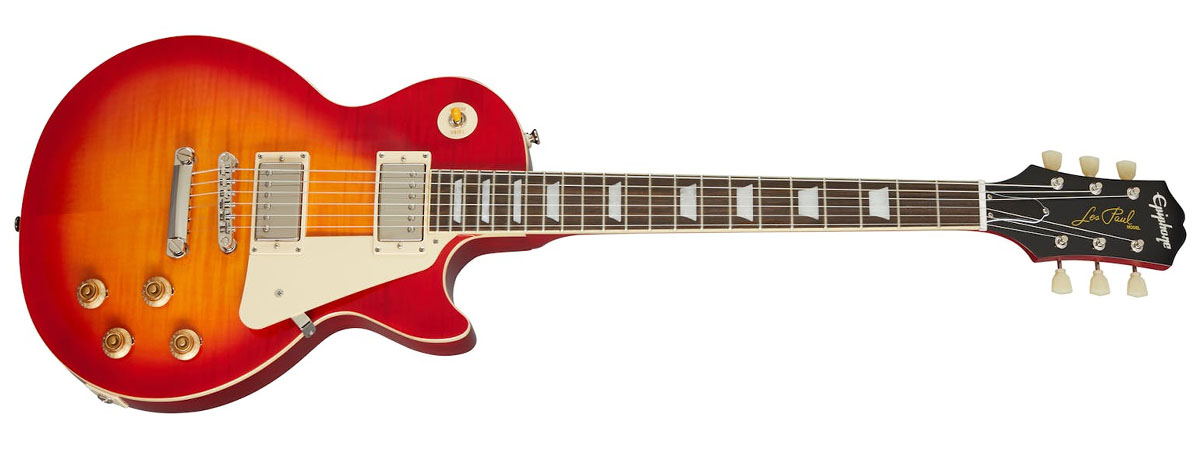
“It’s a tremendous value and an undeniable set of features for a Les Paul,” Koehler says, “Epiphone or otherwise.”
It’s worth clarifying that the top is made from carved hard maple with a AAA-figured veneer to add the flames (you wouldn’t know one way or the other just from looking at it). And while a vintage-correct, non-beveled pickguard is specified, the one included on the review guitar was, inexplicably, beveled.
Acknowledged in the spec sheet, the fingerboard is of Indian laurel rather than rosewood, but it captures the same general look and feel, with perhaps marginally less richness in the hue and with the benefit of not being an endangered species. And while the guitar lacks a period-correct bridge, the larger insets and format of the Epiphone ToneLock ABR-1 bridge and stop-bar tailpiece represent an upgrade in a guitar at this price point.
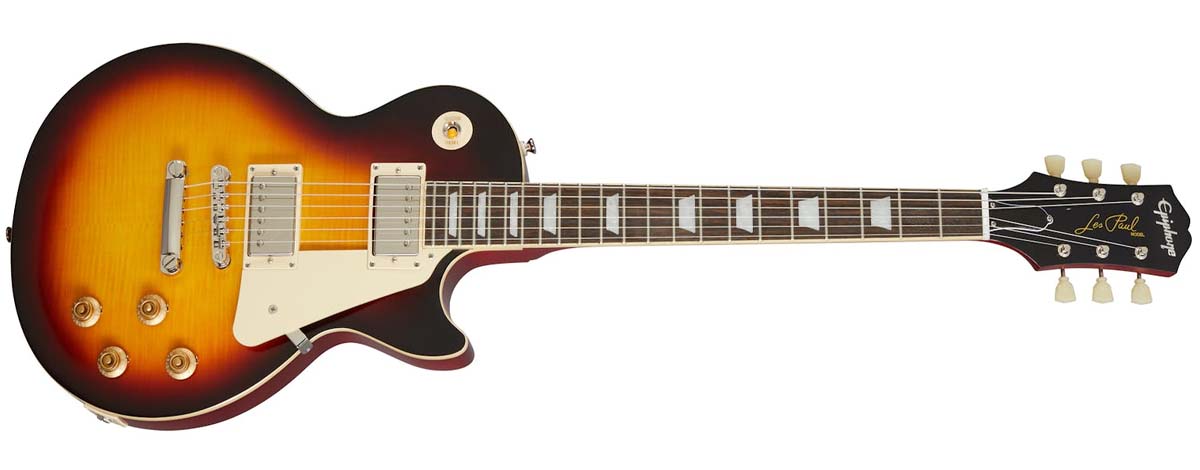
The finish on this guitar feels more matte than the lightly aged VOS of most Custom Shop guitars, but it’s appealingly tactile to the touch and has a nicely played-in look. Likewise, the neck feels great – chunky and rounded in the style of a late-’50s Gibson carve that I really adore, but not so clubby that it’s likely to put off many players.
The fret crowns are well dressed, and the guitar plays well in all positions, although the fret ends are themselves a little sharp and can hitch slightly as you run your hand the length of the neck. Likewise, the two forward corners of the Graph Tech NuBone nut can dig in if you back into them too hard. All in all, though, at this price and given the wealth of bonus features, it’s a job very well done.
So what does it sound like? A Les Paul! Tested through a Friedman Small Box head and 2x12 cab and with several presets on the Fractal Axe-FX III into my studio monitors, the Epiphone Limited Edition 1959 Les Paul Standard does everything you’d expect of a good Les Paul – which is to say it exudes a range of tones that need no introduction.
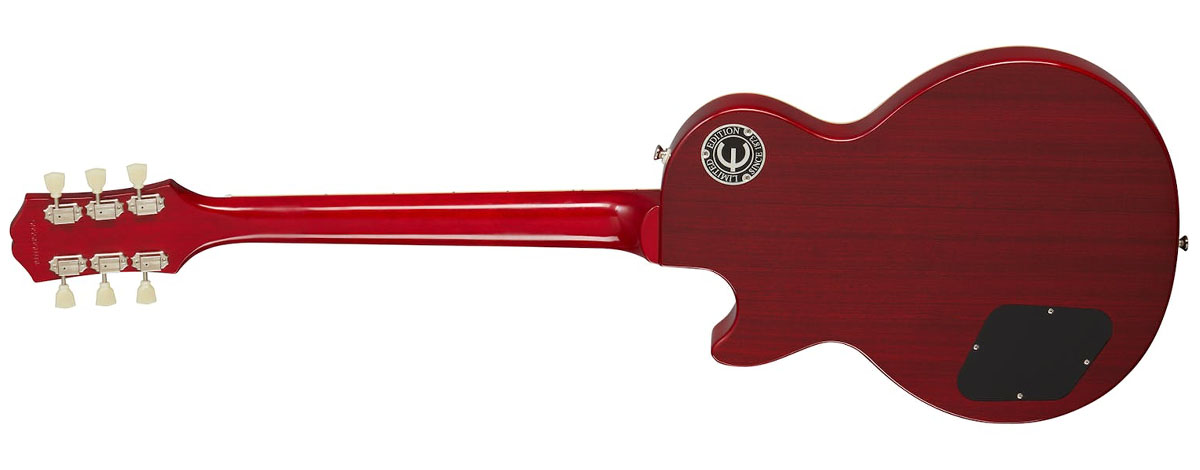
The Burstbucker 2 and 3 in the neck and bridge, respectively, are tried and tested, used in many Gibson U.S.A. models, and they deliver a broadly successful rendition of “that Les Paul thing” into both clean and overdriven amps.
From raucous, crunchy power-chord rhythm to barking, screaming bridge-position leads to warm, throaty blues excursions on the neck pickup – the seminal sounds are all there and entirely stage-ready.
The core voice of this guitar might not be quite as Burst-precise as, say, the Gibson Custom Shop 1958 Les Paul Reissue I have sitting next to it (currently rotating through sets of high-end reproduction PAFs for an upcoming roundup in these pages), but of course that’s a much more significant investment.
Sling the Epiphone over your shoulder, fire up your amp of choice, and go at it down at the local rock dive on a Saturday night when such pursuits are once again an option, and likely no one in the crowd will know the difference. That and your smile will give away how much fun you’re having.
Specifications
- PRICE: $799 street
- NUT: Graph Tech NuBone, 1 11/16” wide
- NECK: Mahogany, 24.75” scale length, rounded “C” profile
- FRETBOARD: Indian laurel, 12” radius
- FRETS: 22 medium-jumbo
- TUNERS: Epiphone Deluxe with tulip keys
- BODY: Solid mahogany back with carved maple top and AAA flamed maple veneer
- BRIDGE: Epiphone LockTone ABR-1 and stop-bar tailpiece
- PICKUPS: Gibson Burstbucker 2 & 3
- CONTROLS: Two Volume and two tone controls, three-way switch
- FACTORY STRINGS: Epiphone .010–.046
- WEIGHT: 9.3 lbs
- BUILT: China
- CONTACT: Epiphone
Dave Hunter is a writer and consulting editor for Guitar Player magazine. His prolific output as author includes Fender 75 Years, The Guitar Amp Handbook, The British Amp Invasion, Ultimate Star Guitars, Guitar Effects Pedals, The Guitar Pickup Handbook, The Fender Telecaster and several other titles. Hunter is a former editor of The Guitar Magazine (UK), and a contributor to Vintage Guitar, Premier Guitar, The Connoisseur and other publications. A contributing essayist to the United States Library of Congress National Recording Preservation Board’s Permanent Archive, he lives in Kittery, ME, with his wife and their two children and fronts the bands A Different Engine and The Stereo Field.
"We tried every guitar for weeks, and nothing would fit. And then, one day, we pulled this out." Mike Campbell on his "Red Dog" Telecaster, the guitar behind Tom Petty & the Heartbreakers' "Refugee" and the focus of two new Fender tribute models
“A good example of how, as artists, you have to blindly move forward with crazy ideas”: The story of Joe Satriani’s showstopping Crystal Planet Ibanez JS prototype – which has just sold for $10,000
